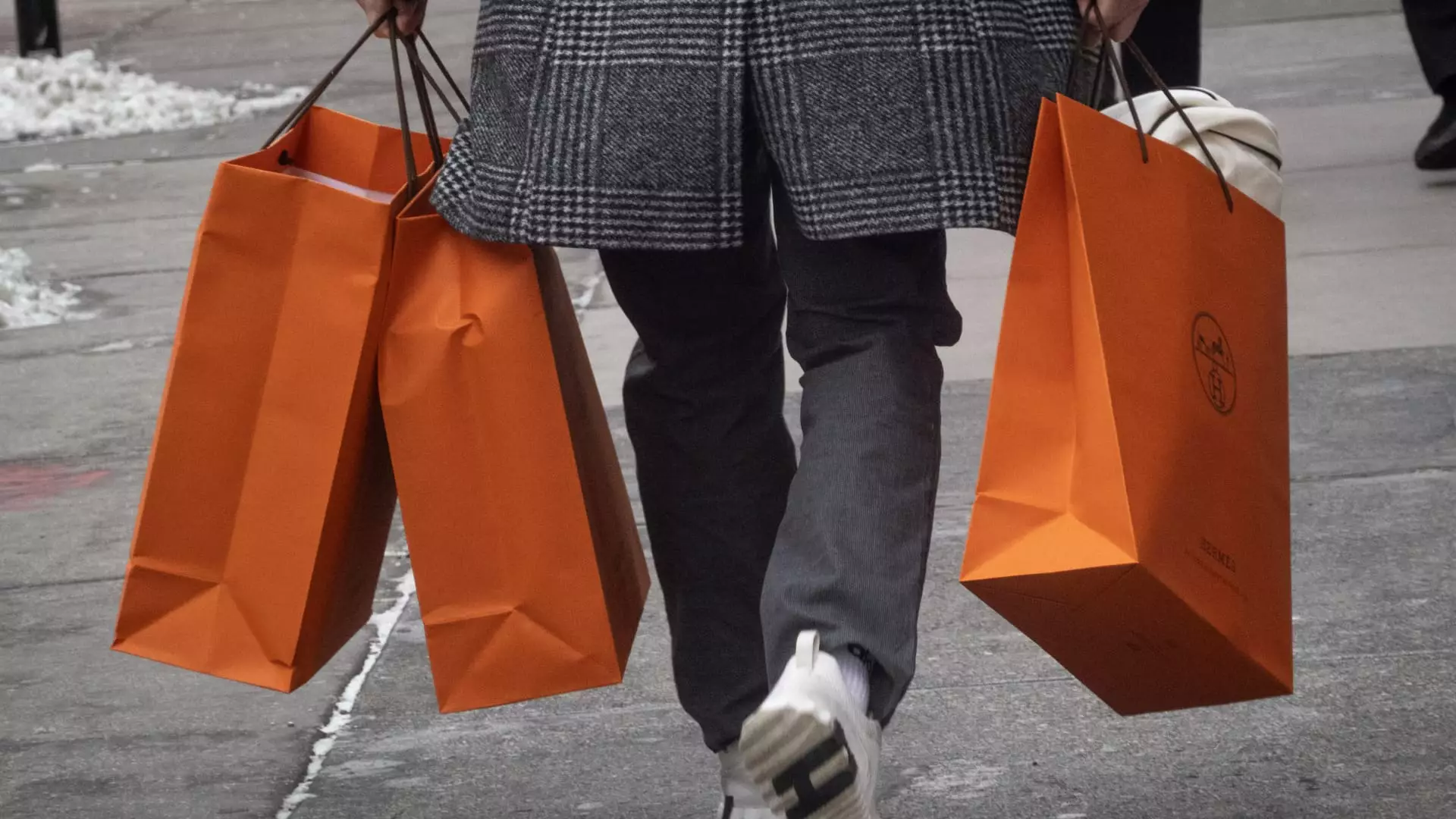European luxury brands have long basked in the glow of their exclusivity and craftsmanship, epitomizing the height of consumer aspiration. Companies like LVMH, Kering, and Hermes have transformed luxury shopping into a compelling pastime that carries with it a certain status, an air of sophistication that transcends mere spending. Yet, today’s tumultuous market conditions stand as a foreboding reminder that this brilliance can wane abruptly. As the specter of U.S. tariffs looms, the cracks in this glamor may widen, exposing fundamental vulnerabilities that luxury brands had hoped to keep hidden.
The immediate impact of U.S. tariffs may appear muted for these companies at first glance; however, the chilling effects of a broader economic decline are brewing underneath the surface. Stocks have already begun to slide, signaling a disconcerting trend even before full-fledged tariffs came into play. Analysts caution that while consumers typically insulated from economic swings dominate the luxury market, they are not entirely immune to price increases stemming from higher import costs. Luxury, despite its allure, cannot escape the tidal waves of uncertainty cascading through the global economy—especially when the tide of recession threatens to retreat.
Presidential Decisions and Market Responses: A Dance of Uncertainty
Last week, President Trump’s announcement of a provisional halt and reduced tariffs bred only a temporary breath of relief, reminiscent of a fleeting mirage. The seemingly optimistic pause does not erase the profound impact of the economic policies already set in motion. As Jamie Dimon of JPMorgan suggested, the political landscape is mired in such chaos that a recession has moved from the realm of speculation to nearly a foregone conclusion, with a staggering 60% probability attached to it.
In many ways, the situation underlines an uncomfortable truth—the very foundations of luxury are being challenged not by direct market effects but by the sprawling ramifications of geopolitical maneuvers. The luxury sector, previously walking on the gilded paths laid by consistent, escalating demand, now finds itself navigating murky waters where consumer confidence is slipping and expectations are lowered. Indeed, analysts like Adam Cochrane are already indicating that the hope for a robust recovery has likely been postponed indefinitely, if not rendered entirely obsolete.
Second-Order Effects: The Domino Effect on Demand
What’s particularly alarming is the potential for second and third-order effects arising from these tariffs. While initial impacts may be categorically described as negligible, the cumulative consequences can reverberate strikingly throughout the marketplace. This is where the real danger lurks: the possibility that economic strain could push luxury consumers to rethink their spending habits. The allure of a Hermes bag or a Burberry trench coat may remain, but that allure can be dulled when budgets tighten in reaction to a wider economic slump.
Already, the luxury sector has shown signs of fatigue, with declines in sales particularly notable in China. With tariffs driving this home, the concern for brands reliant on American consumers as their key growth avenue is palpable. According to Bernstein, U.S. revenues constitute only a fraction—15% to 30%—of these companies’ total sales, yet the American market increasingly reflects the choppy waters bespeaking an imminent downturn elsewhere.
Rethinking Luxury: Shifting Consumer Dynamics
The once-mighty Italian and French luxury houses are now revisiting their strategies. More than ever, brands must contemplate not only supply chain logistics but consumer sentiment as well. A slumping stock market and escalating prices risk the credibility of luxury once seen as recession-proof. Demand, already teetering on the edge post-Covid, could sink further under the combined weight of external pressures and changing consumer behavior.
For brands such as Hermes and Burberry that seem strategically poised to endure the fluctuations, the task then shifts to managing public perception and cultivating loyalty amidst changing tides. Meanwhile, brands like Richemont and Moncler could find themselves battling fierce currents. The challenge lies in adapting to the evolving landscape, where American luxury demand might become a beleaguered afterthought.
As the future unfolds, the luxury sector’s resilience will be tested. Brands must now grapple with the intersection of unaffordability, economic downturns, and consumer perception. With so much at stake, the European luxury giants can no longer solely rely on their historical allure; they must evolve or risk losing the essence that made them household names in the first place.

